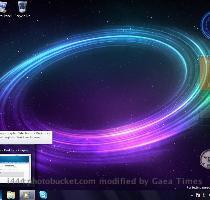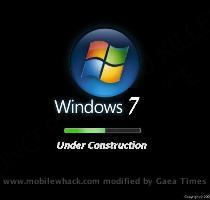Review: To use English or not to teach a foreign tongue? Fluenz says yes, trumps Rosetta Stone
By Deborah Yao, APWednesday, July 21, 2010
Review: Fluenz software better at teaching Italian
MANAROLA, Italy — On a trip through southern Italy years ago, I was embarrassed to discover that all along, I had been mispronouncing “tabacchi” - tobacco shops that sell bus tickets and other sundry. I’d been saying “ta-ba-chee” rather than “ta-ba-kee” until a storekeeper impatiently corrected me.
Determined not to make the same faux pas, I brushed up on Italian using two language-lesson programs ahead of my visit to Cinque Terre and Tuscany in early July. I found the Fluenz software from a relatively new company by that name better than the venerable Rosetta Stone Totale program in helping me retain Italian.
The two programs had opposite approaches. Rosetta Stone Ltd.’s software believes in fully immersing the student in the language, without using any English to explain phrases. By contrast, Fluenz believes that while full immersion might work with children, adults don’t learn languages as instinctively. Fluenz believes that adults learn best when they can relate the grammar and syntax of a foreign language to the structure of the tongue they already know - in my case, English.
I like Fluenz’s approach much better. I like the comfort of hearing English as I go through Italian words, to help me pronounce them and understand what they mean.
Fluenz helped me make the word associations I needed to learn the language faster. For instance, in learning the word “lui,” which means “he,” the smiling female instructor on the computer screen told me to think of a guy named “Louis.”
The instructor also gave tips on how to pronounce Italian properly. For “Sandra,” which is pronounced “sun-drah,” she told me to open up my mouth for the first syllable.
These were the tips and mental bridges to the Italian language that were missing in Rosetta Stone.
Rosetta Stone’s lessons used all Italian words and sentences, which you match to pictures - of a woman eating or children reading. This approach worked well initially, until it got to more complex sentences and phrases. I’m still not sure what some of them meant.
The look and feel of both programs also differs. Fluenz used the video of a friendly instructor to welcome me to the program and ease me into the lessons. Rosetta Stone went straight to the lessons, which might be fine for some folks, but I felt a bit rushed.
Both programs offer language exercises after each lesson to pin down what you’ve learned. There were a variety of tests: You match Italian words to the pictures or type in the words yourself, among others. You weren’t graded but the programs tell you if you’ve made an error.
Rosetta Stone also offers the option of talking to a native speaker for no additional cost. There are group sessions you can join throughout the month. You pick an online meeting time that’s convenient for you.
But both programs fall short in failing to introduce conjugation and grammatical rules, so that I could construct my own sentences. Perhaps it’s just my preference, but as a speaker of Tagalog, Taiwanese and English, I’m not satisfied with simply memorizing sentences as I’ve had to with Rosetta Stone and Fluenz.
It boils down to why I take these lessons. For a casual tourist or business executive, memorizing a smattering of phrases is probably good enough. For more serious linguists, there’s no substitute for a formal Italian lesson. I fall somewhere in between.
Rosetta Stone Totale costs $999 for a year. Lessons can be accessed online through RosettaStone.com, and the price includes audio CDs and a headset to practice five levels of Italian on the go. There is no software to download. Rosetta Stone also makes cheaper sets available, without the language coach and a few other perks such as an online community of learners. The one with all five levels costs $699. In this case, the software comes on CDs that you can buy online or in mall kiosks.
Fluenz offers two levels of Italian for $357 combined. The program comes on DVDs and works on Windows XP, Vista or 7 and on Mac OS X 10.3 or higher. Besides the DVDs, you get an audio CD to review what you’ve learned.
Fluenz also has software for French, Spanish and Mandarin, while Rosetta Stone offers 30 other languages, including Swahili and Turkish.
In the end, I had more fun learning Italian using Fluenz. The software’s female instructor introduced each lesson and sought to evoke the excitement of Italy by sharing imagery such as sitting in an Italian class in Milan near the Duomo, or cathedral. Such mental motivation goes a long way toward keeping me interested in the lessons.
She also encouraged users to keep learning by telling us we can do it: “Italian is your friend,” she said. “I hope you go to Italy soon.”
Tags: Computing And Information Technology, Europe, Italy, Manarola, Software, Western Europe



